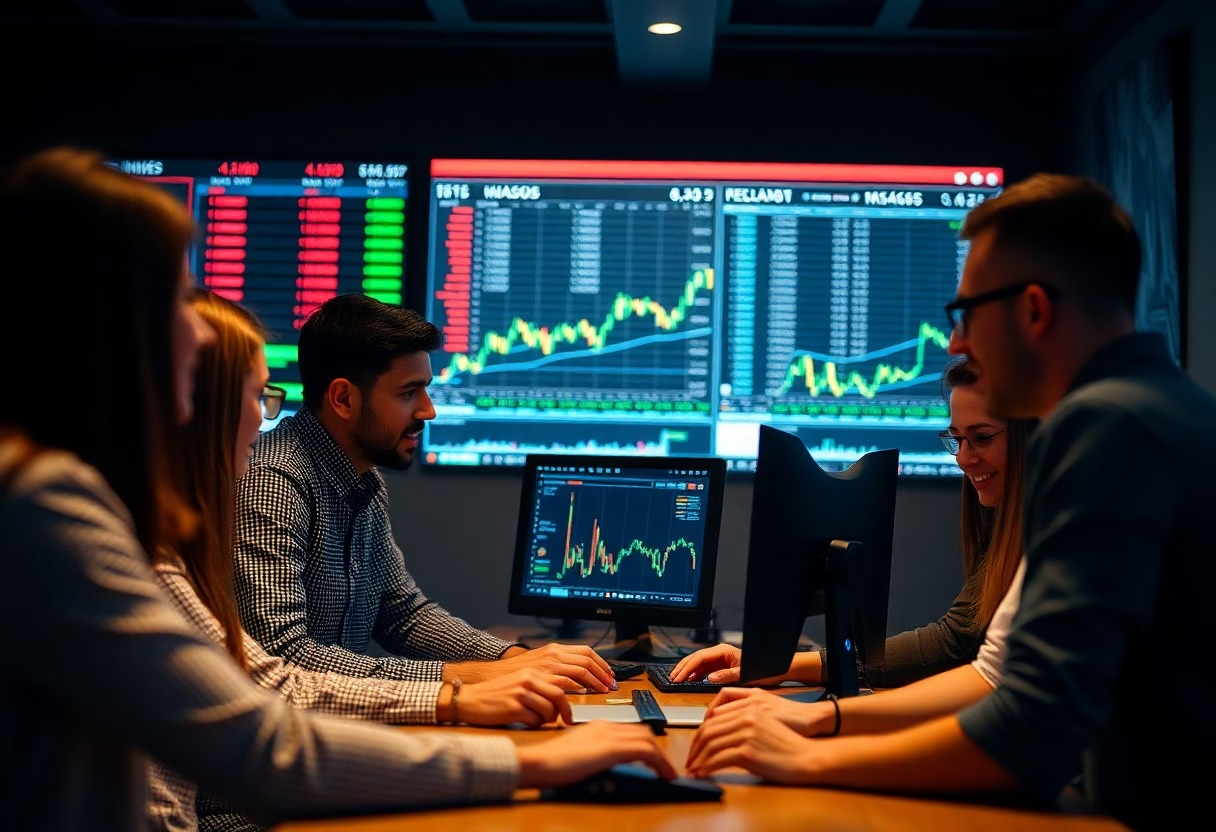Success in Forex trading is not just for seasoned professionals; with the right approach, you can navigate the complexities of the market and build your skills. This guide provides you with important strategies and techniques to transform you from a novice into a confident trader. By understanding key concepts, managing risk wisely, and staying disciplined, you can unlock your potential for profitable trades. Let’s explore the step-by-step process that empowers you to achieve Forex success and take control of your financial future.

Key Takeaways:
- Understand key concepts: Familiarize yourself with important terms and concepts in forex trading, such as pips, spreads, and leverage, to build a solid foundation.
- Develop a trading plan: Create a structured approach that includes your goals, risk management strategies, and trading rules to guide your decision-making.
- Practice with a demo account: Utilize a demo account to gain practical experience and test your strategies without risking real money, allowing for skill development.
1. Learn Forex basics and terminology thoroughly.
2. Choose a reliable broker with good reviews.
3. Practice trading using a demo account first.
4. Develop a solid trading plan and stick to it.
5. Analyze the market trends and charts daily.
6. Manage risk with proper money management techniques.
The Fundamental Forces Shaping Currency Prices
The value of currencies is affected by a myriad of forces, each playing a significant role in shaping price dynamics in the Forex market. Understanding these fundamental factors, from economic indicators to geopolitical situations, can empower you to better analyze currency movements and make informed trading decisions. Your ability to interpret these forces can define your success in trading currencies, providing a strategic edge in the constantly evolving Forex landscape.
The Role of Economic Indicators
Economic indicators serve as crucial tools for gauging a country’s economic health, directly influencing currency valuations. Key indicators such as Gross Domestic Product (GDP), unemployment rates, and inflation data can trigger significant price movements. Monitoring these indicators helps you anticipate trends, align your trades accordingly, and capitalize on potential opportunities in the market.
Geopolitical Events and Their Impact
Geopolitical events can result in swift and unpredictable shifts in currency prices. Situations like wars, elections, and trade negotiations inherently bring uncertainty, often leading to shifts in investor sentiment and market stability. Staying informed about these developments allows you to adapt your strategies and make timely decisions, safeguarding your investments against volatility.
A prime example of geopolitics affecting currency values is the ongoing tension between the United States and China. During periods of heightened trade conflict, the US Dollar often strengthens against major currencies, as investors flock to safe-haven assets. Similarly, turmoil in the Middle East can cause fluctuations in oil prices, directly impacting currencies of oil-exporting nations. By paying close attention to these geopolitical events, you can gain insights into potential risks and opportunities, enabling you to navigate the Forex market with greater expertise.
Crafting Your Trading Strategy: The Blueprint for Success
Designing a trading strategy is like creating a blueprint for your trading journey. A well-structured plan includes clear entry and exit points, risk management rules, and your trading style. Consider factors like your available time for trading, preferred currency pairs, and market conditions to tailor a strategy that aligns with your goals. Stay disciplined and adapt your strategy as you gain experience and insights, ensuring it evolves with your growing expertise.
Technical Analysis: Reading the Markets Like a Pro
Technical analysis relies on historical price data to forecast future movements. By utilizing tools such as charts, trendlines, and various indicators, you can identify patterns and trends that provide insight into potential market behavior. Mastering technical analysis allows you to pinpoint optimal entry and exit points, ultimately enhancing your trading decisions and increasing your chances for profitability.
Fundamental Analysis: The Why Behind Price Movements
Fundamental analysis dives into the economic factors that drive currency values. By examining news releases, economic indicators, interest rates, and geopolitical events, you can better understand why currencies are moving. This in-depth outlook helps you anticipate market reactions and make informed trading decisions based on changes in the underlying economic landscape.
Consider monitoring key economic indicators like Gross Domestic Product (GDP), unemployment rates, and consumer confidence indexes to gauge a country’s economic health. For example, if a country’s GDP growth exceeds expectations, its currency may appreciate against others. Additionally, central bank announcements and interest rate changes can significantly impact exchange rates, making awareness of such events vital for your trading strategy. By combining fundamental analysis with technical insights, you create a well-rounded approach that positions you for successful trades in the forex market.
Risk Management: Your Safety Net in the Forex Jungle
Effective risk management can mean the difference between surviving and thriving in the volatile Forex market. By identifying potential risks and implementing strategies to mitigate them, you create a protective barrier around your investments. This safety net allows you to navigate the unpredictable landscape of currency trading without succumbing to panic or emotional decision-making. Establishing clear guidelines for your trading strategy not only helps preserve your capital but also enhances your overall trading confidence.
Position Sizing: Balancing Risk and Reward
Finding the right position size is imperative to controlling your exposure in Forex trading. By assessing your total account balance and determining how much you are willing to risk on a single trade, you can tailor your position size accordingly. For instance, a rule of thumb is to risk no more than 1-2% of your account balance on each trade. This disciplined approach safeguards your capital and provides a systematic way to engage with potential rewards without jeopardizing your entire investment.
Stop-Loss Orders: Protecting Your Investments
Utilizing stop-loss orders effectively prevents significant losses when trades move against you. A stop-loss order automatically closes your trade at a pre-defined price level, ensuring that you limit your losses to a predetermined amount. This strategy not only minimizes risk but also helps you stick to your trading plan, reducing emotional reactions during market fluctuations.
By placing a stop-loss order at a reasonable distance from your entry point based on your analysis, you create a zone that allows your trade room to breathe while protecting your capital. For example, if you enter a trade at 1.3000 with a stop-loss order set at 1.2950, you’re limiting your risk to just 50 pips. Consequently, should the market move against you, your defined exit ensures that losses are contained, allowing you to enter future trades with a clear mind rather than fear or regret.
The Psychology of Trading: Mastering Your Mindset
Successful Forex trading is as much about understanding the market dynamics as it is about mastering your own mindset. The psychological aspects of trading significantly influence your decisions, often leading to mistakes that can affect your profitability. Developing emotional intelligence can help you navigate the ups and downs of trading, ensuring that your emotions do not dictate your choices, but rather, that your decisions are rooted in solid analysis and strategy.
Overcoming Emotional Trading Mistakes
Emotions like fear and greed can lead to poor trading decisions, such as overtrading or holding onto losing positions for too long. Identifying your emotional triggers is key. To counteract these tendencies, you can implement techniques like journaling your trades and feelings, which will help you spot patterns and recognize when emotions are driving your decisions rather than logic.
Building a Disciplined Trading Routine
A disciplined trading routine is imperative for maintaining consistency and improving your trading performance. Creating a structured daily regimen ensures that you stay focused on your strategy and minimize impulsive actions driven by emotions. Outline specific times for research, analysis, and trading, while also allowing time for reflection and adjustment.
Establishing a disciplined trading routine involves not just setting a schedule, but also sticking to it, regardless of market conditions. Start by dedicating specific hours during the day for market analysis and execution in line with your strategy. Use checklists to prepare yourself before trading sessions, which can include reviewing market news, your previous trades, and risk management rules. This consistent approach reduces the chances of emotional trading, fostering a clearer mindset and enhanced decision-making, ultimately paving your way to success in the Forex market.
Harnessing Technology: Tools Every Trader Needs
Your success in forex trading heavily relies on leveraging technology. Effective tools can provide you with real-time data, automate processes, and aid your decision-making. Consider enhancing your skills with resources like Forex For Beginners: Master The Art Of Trading Like A Pro … to fully understand how technology can streamline your trading experience.
Trading Platforms: Finding Your Perfect Fit
Selecting the right trading platform proves vital to your trading efficiency. Several platforms offer different features to meet your needs, so consider factors like user interface, execution speed, and available tools. Platforms such as MetaTrader 4 and cTrader offer comprehensive tools, while options like TradingView focus on advanced charting capabilities, allowing you to customize your environment for optimal trading.
Utilizing Trading Bots and Algorithms for Efficiency
Integrating trading bots and algorithms can significantly enhance your trading efficiency. Automated systems help execute trades at high speed, reducing human errors and emotional impact. They analyze market conditions and implement your strategy consistently, which is crucial for maximizing opportunities and mitigating losses in fast-moving markets. Many traders incorporate trading bots to monitor multiple currency pairs simultaneously, providing a broader market analysis without manual input.
With algorithms designed for specific trading styles or conditions, you can customize your approach based on historical data and real-time analytics. Popular tools, like the Autobots or AI-driven platforms, enable not only backtesting but also strategy optimization. This means you can fine-tune your tactics by analyzing past performance and adjusting parameters to align with market dynamics. As such, these technological advancements are not just time-saving; they are also integral to retaining a competitive edge in forex trading.
Summing up
Summing up, mastering Forex trading as a beginner requires dedication, continuous learning, and practical experience. By understanding market trends, implementing effective strategies, and managing risk appropriately, you can transform your trading skills from novice to expert. Utilize available resources, practice with demo accounts, and stay updated with market news to enhance your performance. Embrace each learning opportunity, and soon, you will find yourself navigating the Forex market with confidence and competence.

